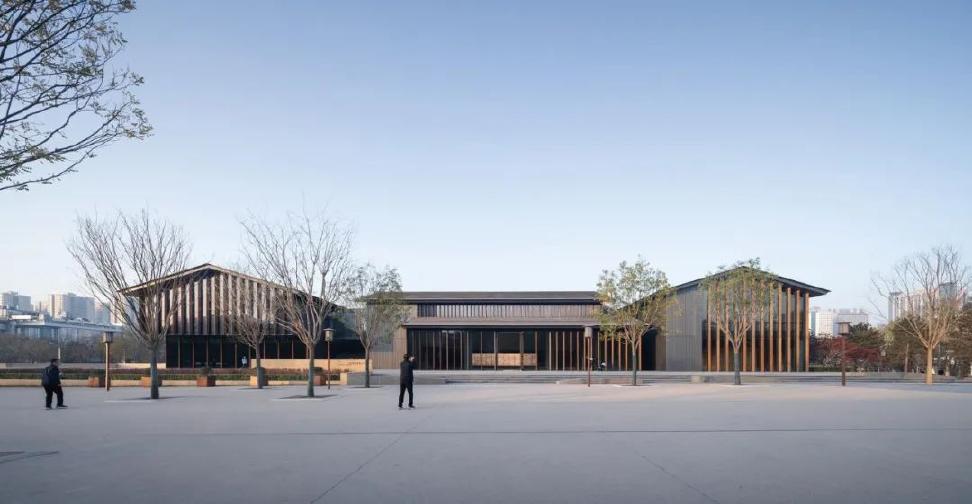In December 2018, Xi’an launched the “Comprehensive Renovation of the Xiaoyan Pagoda Historical and Cultural Area” project, establishing an exhibition hall and tourist service center in the Anren Fang Ruins area, covering an area of 12600 square meters with a building area of 14973 square meters. In the overall planning of historical context protection, the design starting point is how to handle the relationship between architecture, ruins, and the city, achieve integration with urban life, and thus reproduce the historical style..

Based on the relationship between respecting the texture of the place and the urban structure, coordinating with the surrounding scenery of the Little Wild Goose Pagoda, the design team has established a design strategy mainly consisting of the Little Wild Goose Pagoda and the Xi’an Museum, supplemented by the construction of a new exhibition hall and tourist center. The triangle faces each other and responds to the historical and cultural context of the area..


Through the understanding and analysis of the concept of Chang’an Chengying City, the concept of Tang Dynasty homesteads is transformed by the order of the city, neighborhood, and courtyard. The organization of architectural space implies the order of the site composition, and combined with landscape design, the remaining space of the neighborhood walls is displayed. All forms are in a low and hidden posture, with orderly height fluctuations under the 12 meter height limit, integrating into the overall area with the technique of being hidden in the market..

Translate ancient walls, ditches, and courtyards into contemporary material spaces, and use intricately arranged landscape walls to describe the historical functions of these walls, providing a venue for public activities and becoming a part of exhibition activities. Combined with the layout of the site, the gaps between the volumes become the entry channels. The staircase on the left side of the entrance to the exhibition hall leads visitors to the second floor platform. During the closing period, people also have the opportunity to overlook the Little Wild Goose Pagoda from such a height..

The exhibition hall design perceives the spatial information of the site from the perspective of human body dimensions, encompassing the site in a large-span space, forming a mismatch between the site and the exhibition hall in two types of “residential” spaces. The use of accessible glass to protect the visibility of the site, combined with the gaps between the sites to connect the exhibition flow, allows tourists to wander between history, creating a spatial illusion of shuttle between ancient and modern times. Combined with modern exhibition technology, it mobilizes the physical perception of visitors and provides an immersive cultural tourism experience..
























